
|
The Society of Folk Dance Historians (SFDH)
Bulgarian Folk Music Instruments
[
Home |
About |
Encyclopedia | CLICK AN IMAGE TO ENLARGE |
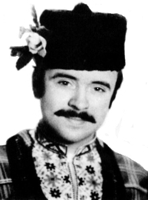
|
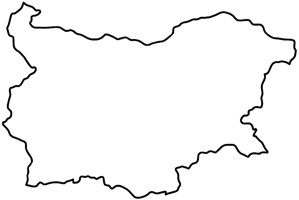 One of the unique and most fascinating aspects of Bulgarian folk music is the great variety of native musical instruments that accompany singers and dancers. None of them are found in the modern symphony orchestra, though most of them are related to standard Western musical instruments. Like the songs and dances that they accompany, these instruments are a genuine folk creation. The method of constructing them as well as the technique of playing them have been handed down from generation to generation with little change through many centuries, with the result that they have retained their distinctive tones and timbres. Today, in the amateur and professional folk ensembles, they have been brought together into an orchestra and adapted for concert performance, producing to the unaccustomed ear, a sound of strange and exotic harmonies and sonorities with a very special beauty of their own.
One of the unique and most fascinating aspects of Bulgarian folk music is the great variety of native musical instruments that accompany singers and dancers. None of them are found in the modern symphony orchestra, though most of them are related to standard Western musical instruments. Like the songs and dances that they accompany, these instruments are a genuine folk creation. The method of constructing them as well as the technique of playing them have been handed down from generation to generation with little change through many centuries, with the result that they have retained their distinctive tones and timbres. Today, in the amateur and professional folk ensembles, they have been brought together into an orchestra and adapted for concert performance, producing to the unaccustomed ear, a sound of strange and exotic harmonies and sonorities with a very special beauty of their own.
THE KAVAL
 Wind instruments are the most common and varied. The KAVAL is a woodwind akin to the flute and is considered the most typical rural instrument. It is found in one or three-piece varieties and consists of a pipe or pipes made of some hardwood such as cornel, plum, or apricot. Master players prefer the more complex three-piece KAVAL. When the three pieces are put together, the instrument is from 24 to 34 inches in length. The sound is produced by carefully blowing across the opening of the upper end of the first pipe. There are eight finger holes in the lower pipe. the KAVAL is made in a variety of tunings. It has a range of almost three octaves and is capable of a wide variety of effects. It's sound is lyrical and very expressive. Some of the best KAVAL makers and players are found in Eastern Thrace and in Strandža and in Dobrudža. There are some smaller versions of the KAVAL known as SVIRKA or CAFARA that are from twelve to twenty inches long with severn finger holes and no resonance openings. The SVIRKA has a range of one octave and in pitch, it is a register higher than the KAVAL and has fewer technical possibilities.
Wind instruments are the most common and varied. The KAVAL is a woodwind akin to the flute and is considered the most typical rural instrument. It is found in one or three-piece varieties and consists of a pipe or pipes made of some hardwood such as cornel, plum, or apricot. Master players prefer the more complex three-piece KAVAL. When the three pieces are put together, the instrument is from 24 to 34 inches in length. The sound is produced by carefully blowing across the opening of the upper end of the first pipe. There are eight finger holes in the lower pipe. the KAVAL is made in a variety of tunings. It has a range of almost three octaves and is capable of a wide variety of effects. It's sound is lyrical and very expressive. Some of the best KAVAL makers and players are found in Eastern Thrace and in Strandža and in Dobrudža. There are some smaller versions of the KAVAL known as SVIRKA or CAFARA that are from twelve to twenty inches long with severn finger holes and no resonance openings. The SVIRKA has a range of one octave and in pitch, it is a register higher than the KAVAL and has fewer technical possibilities.
THE DUDUK
![]() The DUDUK is a whistle with a plugged bottom end (blockflute) and six or seven finger holes. It is related to the recorder and comes in a variety of sizes. the same instrument is found throughout the Balkans and is known as FRULA in Serbia, FLUIER in Romania, and FLOGHERA in Greece.
The DUDUK is a whistle with a plugged bottom end (blockflute) and six or seven finger holes. It is related to the recorder and comes in a variety of sizes. the same instrument is found throughout the Balkans and is known as FRULA in Serbia, FLUIER in Romania, and FLOGHERA in Greece.
THE DVOJANKA
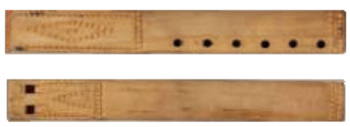 The DVOJANKA is a DUDUK with two pipes, one for the melody, and the other for a drone-like accompaniment. Both of the DVOJANKA and the DUDUK are used widely in West Bulgaria, home of two-part (diaphonic) singing.
The DVOJANKA is a DUDUK with two pipes, one for the melody, and the other for a drone-like accompaniment. Both of the DVOJANKA and the DUDUK are used widely in West Bulgaria, home of two-part (diaphonic) singing.
THE GAJDA
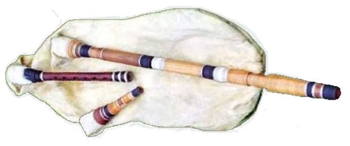 The GAJDA, or bagpipe, comes in many different sizes and tunings. The bag is made from the whole skin of a goat or a kid, and sometimes with a sheepskin. The player blows through a small wooden pipe (duhalo) around which the right foreleg of the skin is tied. The melody is played on the chanter (gajdunica) which is inserted in the neck hole. The gajdunica is a small wooden pipe with eight finger holes and a reed-whistle inserted at the outer end. Its range is rather narrow – only slightly more than an octave. In the opening of the left foreleg is tied the drone pipe (ručilo), a three-piece wooden pipe with a reed-whistle also inserted at the upper end. The ručilo produces only one constant tone as an accompaniment to the melody. Like the more familiar Scottish and Irish bagpipes, the Bulgarian variety is loud in tone with its own particular timbre. According to Todor Prašanov, a Bulgarian ethnomusicologist, the bagpipe hs been played in Bulgaria for at least 2,000 years and there is evidence that the old Thracian tribes used it! There are also some well-kept frescoes and paintings in present-day Bulgaria depicting scenes of bagpipers and dancers dating back to the 14th century. Today, forms of the GAJDA can be found throughout Europe, the Middle East, and North Africa. In Bulgaria, they are still widely used, especially in East Thrace and in the Rhodope Mountains. The Rhodope bagpipe is bigger, has deeper tones, and is known under the name of KABA (low-pitched) GAJDA. In the other districts of Bulgaria, the smaller bagpipes are called DŽURA (high-pitched).
The GAJDA, or bagpipe, comes in many different sizes and tunings. The bag is made from the whole skin of a goat or a kid, and sometimes with a sheepskin. The player blows through a small wooden pipe (duhalo) around which the right foreleg of the skin is tied. The melody is played on the chanter (gajdunica) which is inserted in the neck hole. The gajdunica is a small wooden pipe with eight finger holes and a reed-whistle inserted at the outer end. Its range is rather narrow – only slightly more than an octave. In the opening of the left foreleg is tied the drone pipe (ručilo), a three-piece wooden pipe with a reed-whistle also inserted at the upper end. The ručilo produces only one constant tone as an accompaniment to the melody. Like the more familiar Scottish and Irish bagpipes, the Bulgarian variety is loud in tone with its own particular timbre. According to Todor Prašanov, a Bulgarian ethnomusicologist, the bagpipe hs been played in Bulgaria for at least 2,000 years and there is evidence that the old Thracian tribes used it! There are also some well-kept frescoes and paintings in present-day Bulgaria depicting scenes of bagpipers and dancers dating back to the 14th century. Today, forms of the GAJDA can be found throughout Europe, the Middle East, and North Africa. In Bulgaria, they are still widely used, especially in East Thrace and in the Rhodope Mountains. The Rhodope bagpipe is bigger, has deeper tones, and is known under the name of KABA (low-pitched) GAJDA. In the other districts of Bulgaria, the smaller bagpipes are called DŽURA (high-pitched).
THE ZURNA
 In parts of the Pirin and Rhodope regions, one can still hear the ZURNA (or ZURLA) being played. The ZURNA is not originally a Bulgarian folk instrument. It definitely originated in the Far East and Middle East, and made its way to Bulgaria via Turkey. It is usually played today by Turks and Romani living in the above mentioned areas. Two ZURNI (plural) are usually played together in a diaphonic relationship, one playing the melody line and the other a constant drone, similar to the bagpipe. The ZURNA is often made of cherry or plum wood and averages twelve inches in length. It consists of seven or eight finger holes, and has a reed-whistle at the upper end. Its closest cousin in the modern symphony orchestra would be the oboe. The town of Petrič, in the Pirin area near the Greek border, is quite famous for its virtuoso ZURNA players.
In parts of the Pirin and Rhodope regions, one can still hear the ZURNA (or ZURLA) being played. The ZURNA is not originally a Bulgarian folk instrument. It definitely originated in the Far East and Middle East, and made its way to Bulgaria via Turkey. It is usually played today by Turks and Romani living in the above mentioned areas. Two ZURNI (plural) are usually played together in a diaphonic relationship, one playing the melody line and the other a constant drone, similar to the bagpipe. The ZURNA is often made of cherry or plum wood and averages twelve inches in length. It consists of seven or eight finger holes, and has a reed-whistle at the upper end. Its closest cousin in the modern symphony orchestra would be the oboe. The town of Petrič, in the Pirin area near the Greek border, is quite famous for its virtuoso ZURNA players.
THE GÂDULKA
 In the string family, the most common instrument is the GÂDULKA, a bowed instrument related to the Greek lyra and to the violin. It consists of a pear-shaped body with a broad, short finger board, all carved from one single piece of wood, and a thin resounding board of fir wood covering the upper part of the body. The instrument has three or four strings of gut or steel, with three or eight additional resonance strings (sympathetic strings) beneath them. The four-string GÂDULKA is the most widespread. The bow consists of a slender stick strung with horsehair.
In the string family, the most common instrument is the GÂDULKA, a bowed instrument related to the Greek lyra and to the violin. It consists of a pear-shaped body with a broad, short finger board, all carved from one single piece of wood, and a thin resounding board of fir wood covering the upper part of the body. The instrument has three or four strings of gut or steel, with three or eight additional resonance strings (sympathetic strings) beneath them. The four-string GÂDULKA is the most widespread. The bow consists of a slender stick strung with horsehair.
The technique of playing the GÂDULKA differes markedly from that of the violin. The instrument is not pressed between the chin and shoulder, but is held vertically on the knee and the strings are fingered with the soft part of the fingertips nearest the fingernails without pressing the strings down to the fingerboard. When the melody is bowed on the upper strings, the lower resonance strings provide continuous accompaniment. The GÂDULKA has a strong tone of considerable range that depends on the size of the instrument. It is used for solo performance, for accompanying singers, and quite frequently nowadays for ensemble playing with other folk instruments. Famous GÂDULKA makers and players are found in both East and West Thrace and in certain districts of North Bulgaria. The GÂDULKA is known in certain parts of the country as KEMENČE or KEMENE (Turkish words). In the region of DOBRUDŽA, a smaller type of GÂDULKA without sympathetic strings is known as KOPANKA GÂDULKA.
THE TAMBURA
 The TAMBURA is similar in construction to the GÂDULKA but its strings are plucked with a small pick or feather, as with a mandolin. In appearance, the instrument is quite beautiful. The pear-shaped body is small and the fingerboard is long and slender. The four-string TAMBURA is the most popular version and is used to accompany singing, especially in the Pirin and Rhodope regions. Two of the strings are tuned to the voice of the singer and carry the melody, while the other two strings are tuned one tone lower and thus echo the musical line. The sound is tender and light. In various parts of the country the TAMBURA is also known under the names DRÂNKA, SAZ, and BAJLAMA (Turkish names). Today, in folk orchestras and ensembles, the TAMBURA often plays the role of a rhythm and chord instrument, like a guitar.
The TAMBURA is similar in construction to the GÂDULKA but its strings are plucked with a small pick or feather, as with a mandolin. In appearance, the instrument is quite beautiful. The pear-shaped body is small and the fingerboard is long and slender. The four-string TAMBURA is the most popular version and is used to accompany singing, especially in the Pirin and Rhodope regions. Two of the strings are tuned to the voice of the singer and carry the melody, while the other two strings are tuned one tone lower and thus echo the musical line. The sound is tender and light. In various parts of the country the TAMBURA is also known under the names DRÂNKA, SAZ, and BAJLAMA (Turkish names). Today, in folk orchestras and ensembles, the TAMBURA often plays the role of a rhythm and chord instrument, like a guitar.
THE TÂPAN
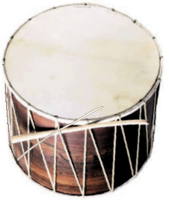 The percussion instruments consist of drums of different tones and timbres made of skins stretched over wooden or clay sounding boards of various sizes and shapes. Among the most common is the TÂPAN (TŬPAN, BARABAN) which is a big drum with two skins stretched on each side of a wooden cylinder. The player marks the beat with a stick in each hand – one big one to stress the main accents of the rhythm and a smaller one (sometimes a twig) to make fancier beats.
The percussion instruments consist of drums of different tones and timbres made of skins stretched over wooden or clay sounding boards of various sizes and shapes. Among the most common is the TÂPAN (TŬPAN, BARABAN) which is a big drum with two skins stretched on each side of a wooden cylinder. The player marks the beat with a stick in each hand – one big one to stress the main accents of the rhythm and a smaller one (sometimes a twig) to make fancier beats.
THE TARAMBUKA
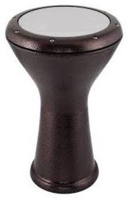 The TARAMBUKA (TARABUKA) is a small hand drum made of clay or, more recently, metal. It consists of a main cylinder open at both ends, larger at the top, with a small skin stretched onto the upper opening. The rhythm is marked with fancy snaps and rolls with the fingers. This drum came to Bulgaria from the Middle East where it is known under the names of DERBUKKAH or DUMBEK. As in the case of the ZURNA, Romani and Turks are among the finest players of percussion instruments.
The TARAMBUKA (TARABUKA) is a small hand drum made of clay or, more recently, metal. It consists of a main cylinder open at both ends, larger at the top, with a small skin stretched onto the upper opening. The rhythm is marked with fancy snaps and rolls with the fingers. This drum came to Bulgaria from the Middle East where it is known under the names of DERBUKKAH or DUMBEK. As in the case of the ZURNA, Romani and Turks are among the finest players of percussion instruments.
THE DAJRE
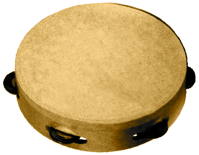 The DAJRE (DEF) is a big tamburine-like percussion instrument that, like the TARAMBUKA, is seen mostly in Southwest Bulgaria.
The DAJRE (DEF) is a big tamburine-like percussion instrument that, like the TARAMBUKA, is seen mostly in Southwest Bulgaria.
In Bulgaria, it is usually the men who play the musical instruments. Many young boys learn how to play the old folk instruments from their fathers and other relatives. They often learn the art of making them too! In 1973, a school for folk instrumentalists, the first in Europe, was set up in Kotel, Thrace. In this unusual high school, boys and girls learn to play Bulgarian folk instruments under the guidance of masters of folk music who have won fame in all parts of the country. During the summer, the students wander through Bulgaria learning regional styles and instrumental techniques from village people. More recently, another similar folk music school opened up in Široka Lâka in the Rhodopes and still another was scheduled for opening the next fall near Sofia. The complete musical training in a school like this takes five years!
It is indeed encouraging to see that even today, the tradition of playing these old (bitovi) folk instruments is still carried out among the younger generations. It is also a fact, however, that the old master instrument makers are dying causing many young would-be folk musicians to find it easier to concentrate on playing modern western-type musical instruments that have appeared and spread through Bulgaria in the last thirty years or so, and which have been further popularized through medias such as radio, television, records, and modern folk ensembles.
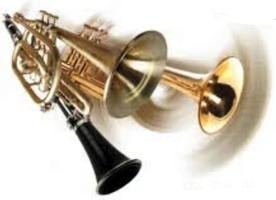 In the 1920s and 1930s, BRASS instruments appeared on the Bulgarian musical scene, probably through the influence of the military-type marching bands. Before World War II, small combos consisting of trumpets, cornets, clarinets, trombones, French horns, and even tubas began to appear in towns and villages during folk manifestations and brass bands still predominate at wedding feasts. Romani are avid fans of the "BRASS sound." In the thirties with the first major production of phonograph records in Bulgaria as well as the rapid growth of radio, BRASS bands were favorites among the listening audiences. Certainly one of the most famous of these bands was the one led by Karlo Iliev. The group was known under the name of Korenjajškata Grupa. Some of their best hits made their way here to America and the folk dance movements: Eleno Mome, Čamčeto, Pred Tsenkini Râčenica, etc.
In the 1920s and 1930s, BRASS instruments appeared on the Bulgarian musical scene, probably through the influence of the military-type marching bands. Before World War II, small combos consisting of trumpets, cornets, clarinets, trombones, French horns, and even tubas began to appear in towns and villages during folk manifestations and brass bands still predominate at wedding feasts. Romani are avid fans of the "BRASS sound." In the thirties with the first major production of phonograph records in Bulgaria as well as the rapid growth of radio, BRASS bands were favorites among the listening audiences. Certainly one of the most famous of these bands was the one led by Karlo Iliev. The group was known under the name of Korenjajškata Grupa. Some of their best hits made their way here to America and the folk dance movements: Eleno Mome, Čamčeto, Pred Tsenkini Râčenica, etc.
 One of Karlov's musicians in the band was his own son, Boris Karlov, who had begun at an early age to play folk melodies on his own ACCORDION and who was later to start the phenomenal trend of ACCORDION folk music, his style and technique influencing the whole course and future of Bulgarian folk music. Boris formed his own band where the ACCORDION was the leading instrument. Boris also composed many new Horo and Râčenica tunes that became instant successes among the public in the 1950s and early 1960s. Boris died in 1965 at the age of 40 while on a concert tour in Yugoslavia, but by that time many other talented accordionists had formed bands and were already famous on radio and records too.
One of Karlov's musicians in the band was his own son, Boris Karlov, who had begun at an early age to play folk melodies on his own ACCORDION and who was later to start the phenomenal trend of ACCORDION folk music, his style and technique influencing the whole course and future of Bulgarian folk music. Boris formed his own band where the ACCORDION was the leading instrument. Boris also composed many new Horo and Râčenica tunes that became instant successes among the public in the 1950s and early 1960s. Boris died in 1965 at the age of 40 while on a concert tour in Yugoslavia, but by that time many other talented accordionists had formed bands and were already famous on radio and records too.
Some of these new virtuosos included Kosta Kolev, Ivan Šibilev, Mišo Gjurov, and Ibro Lolov. A listener can easily notice, however, that all of the "new" accordionists are strongly influenced by Karlov's style and technique! Today, there are dozens of new orchestras using ACCORDIONS, clarinets, trumpets, etc. Most of the amateur dance ensembles throughout Bulgaria also prefer nowadays to use these newer-type bands because they produce a louder sound on stage and because they make music more accessible to Western audiences as well. It is a fact that many folk dancers here in America were first introduced to Bulgarian folk dance through the "exotic" sound of Boris Karlov. I certainly was!
Today, most Bulgarians are proud of their folk music heritage, and folk music records still account for a major part of record industry productions and radio and television shows. Many new folk music tunes (not songs) are being composed by talented young musician-composers and some of these melodies become "instant hits" among the listening public!
The Bulgarians have even experimented with other forms of music, using folk motifs as a base. There are now several classical works for symphony orchestra using Bulgarian tunes and rhythms. Petko Stainov, Pančo Vladigherov, and Filip Kutev are Bulgarian classical composers that were particularly influenced by traditional music. Kutev's strong love for folk music led to the eventual formation in 1954 of the Bulgarian National Folk Music and Dance Ensemble. Kutev also revolutionized the course of folk music and folk orchestras by setting up a symphony orchestra-type group consisting entirely of village instruments played by village musicians. Since then, many amateur or semi-professional ensembles in Bulgaria have applied Kutev's musical innovations to their own setups. In the last decade, there have been bulgarian jazz bands that have experimented with folk music!
It is indeed a fact that today many musicians and composers here in the West have found influences and inspirations in the music and rhythms of the Middle East and the Balkans. Jazz stars such as Dave Brubeck attracted some noteworthy attention in the 1960s with such tunes as "Blue Rondo a la Turque" in 9/8 meter and "Unsquare Dance" in 7/8. More recently, rock groups have also caught on: Kaleidoscope, Devil's Anvils, Mothers of Invention, Don Ellis Group, and Cat Stevens are only a few of the better-known groups to have experimented with the "Balkan Sound" with some degree of success.
Perhaps the most incredible manifestation of this Balkan music craze here in North America has been the recent formation of actual village-type bands using old village instruments like GAJDA, GÂDULKA, and TAMBURA. These groups consist of young Americans, not necessarily music students (some are even astrophysicists and chemists), many of whom have never even set foot in the "holy land" . . .! California seems to be the center of that new trend, although Balkan village orchestras have also begun to appear in the Midwest and on the East Coast. A few of these groups have even attained nationwide fame through record releases and appearances at folk dance events. Among the most well-known were Pitu Guli from Los Angeles and Novo Selo from Philadelphia.
Some fanatics have even gone further than just the playing aspect and have begun to actually make the old instruments in the true village style. These American instrument masters have access to more sophisticated tools and materials than could be found in the village and turn out small "chef d'oeuvres!" Numerous aspiring young Balkan folk musicians across North America are placing instrument orders and sometimes the waiting list is quite long. The time is probably not too far from now when the most coveted folk music instruments among the musicians in the remote villages of east Thrace and the Rhodopes will be the ones bearing the special stamp of quality: MADE IN SAN DIEGO, U.S.A. . . .!
This article was written by Yves with adaptations of an article by the Ivan Kačulev Institute of Music, Bulgarian Academy of Sciences. It appeared in the syllabus accompanying the Folk Dance and Music Seminar held in June 1975 in Binghamton, New York. It was then reprinted in the January-February 1976 issue of Cemberim, a newsletter/magazine edited by Emily Smith. And then it was printed in the January 1977 issue of Mixed Pickles, a folk dance newspaper edited by Raymond LaBarbara.
DOCUMENTS
- Bulgaria, a country.
- Bulgaria and Its Dances, an article.
- Bulgarian Collection, an article.
- Bulgarian Dance, an article.
- Bulgarian Rhythm, an article.
- Bulgarian Village Music, an article.
- Yves Moreau, an article.
Used with permission of the author.
This page © 2018 by Ron Houston.
Please do not copy any part of this page without including this copyright notice.
Please do not copy small portions out of context.
Please do not copy large portions without permission from Ron Houston.